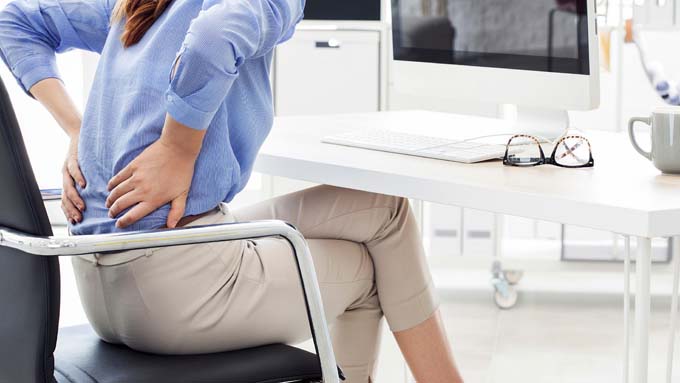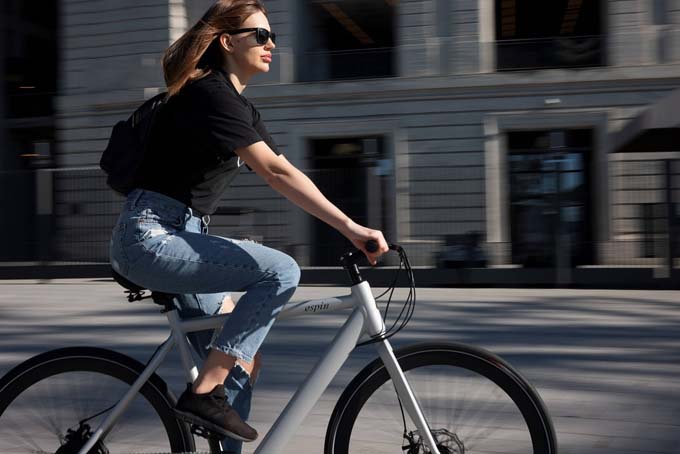Movement and ergonomic accessories
Heads bent over tablets and smartphones everywhere you look: This is the picture on the subway, bus, train and streetcar. Mobile devices have changed the way we spend our free time, and now have a firm grip on our everyday working lives. They allow us to access the office around the clock. This simplifies our lives, but also has its pitfalls. Our health is affected. With a tablet on our lap, we don't think about our neck - until it starts to hurt.

Awareness of ergonomically sensible work is now quite well developed in the office. Numerous aids and behavioral tips help to stay fit when sitting or standing for long periods of time.
27 kilogram weight in neck
If we hold our head at a 60-degree angle (the usual position when operating tablets), we subject our neck vertebrae to tensile forces of up to 27 kilograms, as a study by a New York spine surgeon has shown. It goes without saying that this can't be good in the long run. Neck and back pain are the result. The eyes also tire quickly, because the screens reflect and are often small. Editing texts becomes more strenuous as a result. In short, mobile devices have many advantages, but they cannot be adapted to our anatomical needs as easily as a conventional computer.
The kick for the neck
In the meantime, there are accessories on the market that we can use to give our tablet or smartphone an update in terms of ergonomics.
Important rule: Lift the view. Holders and stands allow the devices to be placed in an almost vertical position. This allows us to look at the screen without bending our neck. If we add an external keyboard to our device, the mobile office is already much better ergonomically.
All posture traps cannot be avoided with it yet. Screens are not getting any bigger because of it. And anyone who works with a laptop or tablet on the train knows that tables and seats rarely allow for an exemplary posture.
Quarter-hourly service - the ideal timetable
Alternatively, it is advisable to consciously schedule those tasks on the mobile devices for which they are best suited: telephone calls, appointment management or short research. Work that requires a larger screen or involves longer typing sessions should be postponed until you are at a fixed and ergonomically optimally designed workstation.
If we remain in the same posture for a long time, our muscles tense up and complaints are the result, even if our working position is correct from an ergonomic point of view. It is therefore all the more important that we take regular breaks, move around and continue working in a different posture. A Harvard University study recommends changing position every 15 minutes. This means that we can work on the sofa with the tablet on our knees for a short time without harming ourselves - provided we get up again soon.
Mobility in the office is healthy
Sofas are already standard in contemporary offices. From different zones for concentrated work or meetings, employees can always choose the place that is ideal for their task. For some years now, mobile working has not only taken place outside the office, but also inside it. Employees switch between sofa, lounge, high table, retreat zone and coffee bar. Thanks to more spacious rooms, they can move around more than employees in a conventional office. Danny Schweingruber from Witzig, The Office Company welcomes the move away from individual workstations: "This promotes a dynamic that is good for our health," says the Head of Workspace Consulting.
"Especially people who often work with mobile devices should take advantage of every possible opportunity to move around," Schweingruber recommends.
Sitting dynamically
"Especially people who often work with mobile devices should use every possible opportunity to move," recommends Schweingruber. They can use not only their lunch break for this, but also sitting on the office chair. Because office manufacturers have now designed models that allow the pelvis to tilt in all directions. Says Schweingruber, "Sitting in motion mobilizes the spine and thus helps prevent complaints." This relieves the strain on the back.
WITZIG https://www.witzig.ch/de/find/
Checklist-how ergonomically they work









